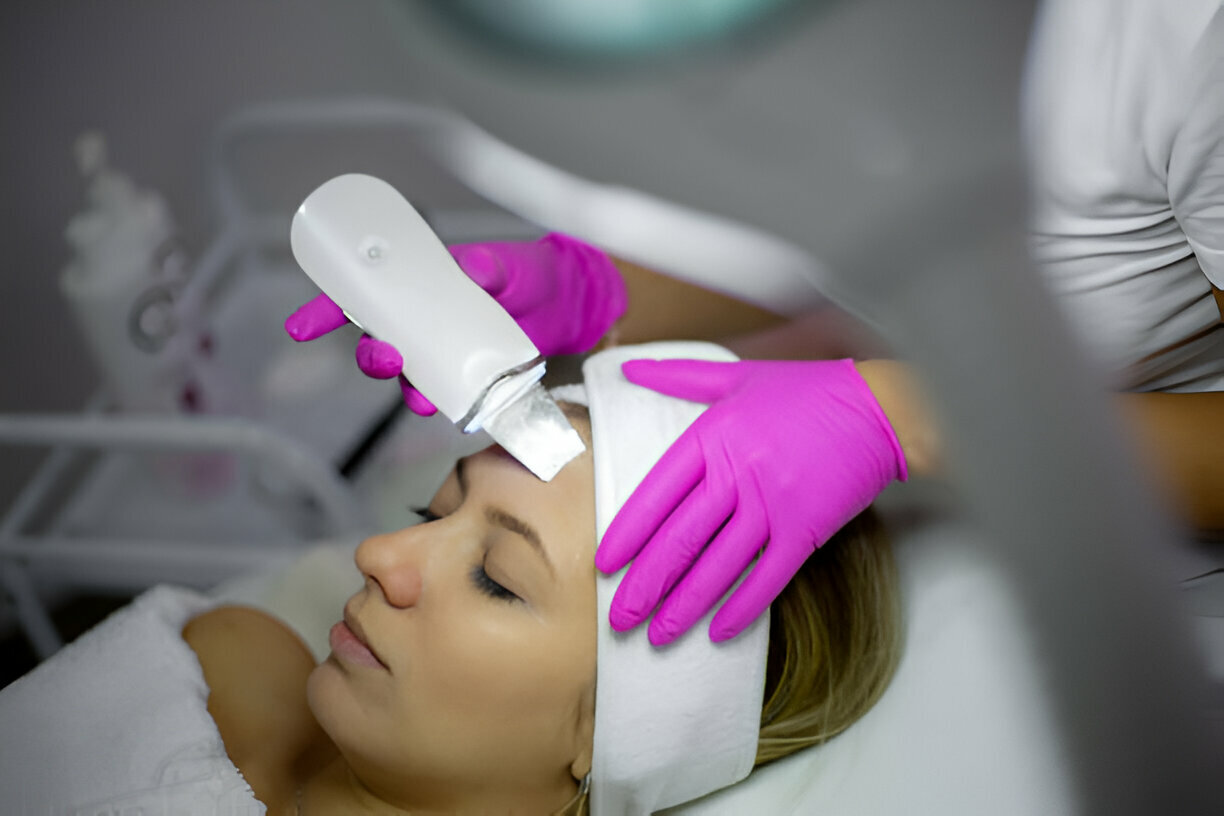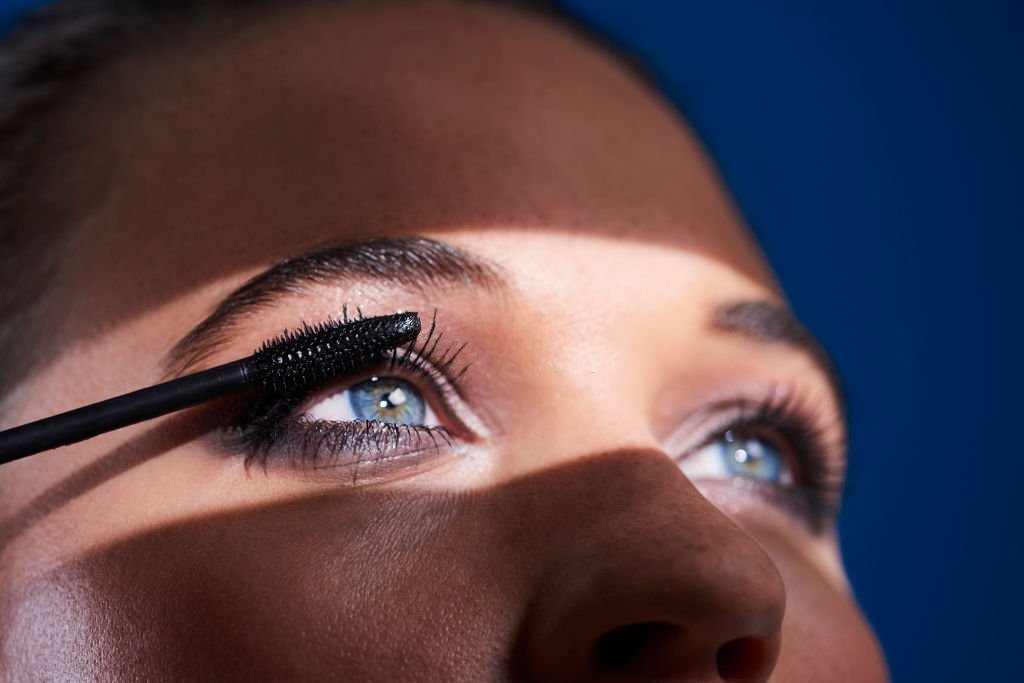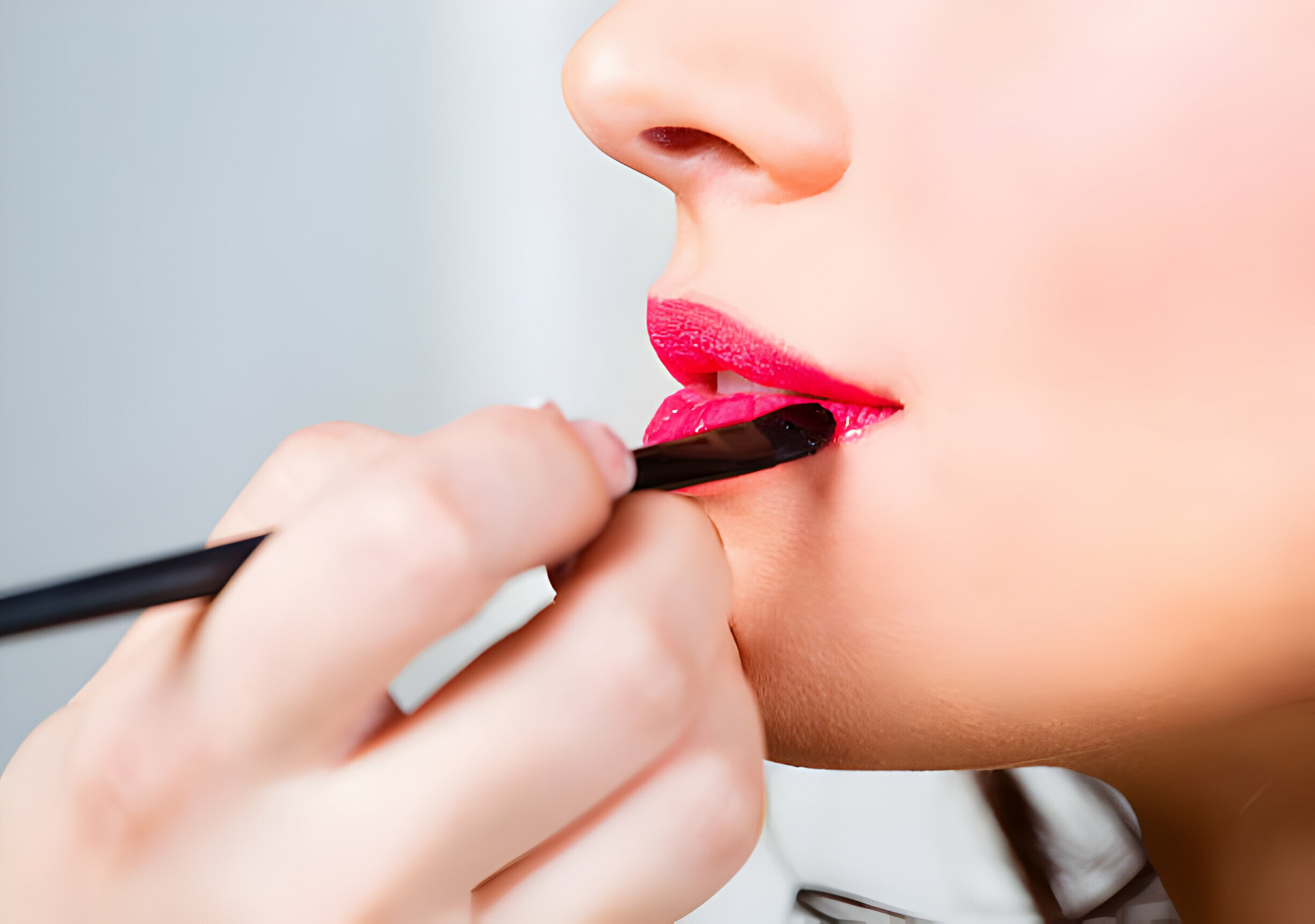How Often Should You Dermaplane?
Dermaplaning has emerged as a popular skincare treatment known for its ability to exfoliate the skin, remove fine facial hair, and promote a smoother complexion. As more individuals incorporate dermaplaning into their skincare routines, questions arise regarding the optimal frequency for this procedure. Finding the right balance between reaping its benefits and avoiding overexfoliation is essential for maintaining healthy, radiant skin. In this article, we delve into the intricacies of dermaplane frequency, exploring the factors that influence it and providing guidance on how often individuals should consider incorporating this treatment into their skincare regimen.
What Is Dermaplaning?
Dermaplaning is a skin treatment that uses a surgical scalpel to gently shave off the top layer of dead skin cells and fine vellus hair (peach fuzz). It is performed by licensed estheticians and dermatologists.
The scalpel lightly scrapes the skin’s surface to remove anything that is dulling the skin’s appearance. Dermaplaning is considered a form of manual exfoliation and can provide both immediate and long-term benefits when done properly.
Unlike methods like scrubs or chemical peels, dermaplaning uses a precise instrument to gently slough off debris. It does not damage the deeper layers of skin. The treatment can be done on any area of the face and neck.
Dermaplaning is valued for its ability to make the complexion look smoother, brighter and more youthful. It also allows skincare products to better absorb afterwards. Along with exfoliation, dermaplaning is an effective way to remove vellus hair and “peach fuzz” from the face for a smooth feel and appearance.
Benefits Of Dermaplaning
Dermaplaning provides several benefits for the skin by gently exfoliating the top layer of dead skin cells and vellus hair, also known as peach fuzz.
- Exfoliates Dead Skin Cells: Dermaplaning uses a sterile, surgical scalpel to gently scrape off the top layer of dead skin cells. This exfoliates the skin and reveals newer, brighter skin underneath. It is a deeper exfoliation than manual scrubs or chemical peels.
- Removes Peach Fuzz: The scalpel also removes fine vellus hairs on the face that can trap dirt and oil. This leaves skin with a smooth, hair-free appearance.
- Makes Skin Smoother: By sloughing off dead cells and peach fuzz, dermaplaning leaves skin feeling exceptionally smooth and soft. The treatment can minimize the appearance of fine lines and wrinkles.
- Allows Better Product Absorption: Removing the top barrier of dead skin cells allows skincare products like serums and creams to better absorb into the deeper layers of skin. This can boost the effectiveness of the skincare regimen.
Who Is Dermaplaning For?
Dermaplaning is suitable for most skin types and tones. Both men and women can benefit from this treatment.
Some key facts about who dermaplaning is for:
- Dermaplaning is safe and effective on all skin tones and types. The gentle exfoliation reveals fresh, glowing skin on everyone from fair to dark complexions.
- Men and women alike can get excellent results. Dermaplaning removes fine facial hair and peach fuzz, which many men appreciate. It also exfoliates and evens out skin texture for a smooth complexion.
- Mature skin benefits from dermaplaning. The treatment removes dead skin cells and promotes cell turnover. This helps reduce the appearance of fine lines, wrinkles, age spots, and other signs of aging.
- Oily and acne-prone skin sees great improvements. Dermaplaning gently removes debris, excess oil, and buildup from pores to prevent breakouts. The exfoliation helps control acne.
- Those with dry or sensitive skin can get dermaplaning. The treatment doesn’t use harsh chemicals. As long as proper care is taken, dermaplaning is gentle enough for sensitive skin.
- People concerned with facial hair growth often get dermaplaning. It removes vellus hair (peach fuzz) and helps slow the regrowth process. This is preferable for some compared to other hair removal methods.
- Busy moms, business professionals, and others who want low-maintenance skin care are ideal candidates. Dermaplaning is a quick, simple way to exfoliate and rejuvenate the skin.
In summary, dermaplaning is suitable for all genders and skin types. Both women and men can achieve smooth, glowing skin from this treatment.
What To Expect During A Dermaplaning Session
Dermaplaning is a relatively quick and straightforward in-office procedure. Here’s what you can expect during a typical dermaplaning appointment:
The first step is to thoroughly cleanse and prep the skin. This removes any dirt, oil, makeup, or debris from the surface of the skin to allow for optimal exfoliation. The skin may be cleansed both before arriving for your appointment and at the beginning of your treatment.
Next, a special lubricating gel is applied to the skin. This helps the dermaplaning tool glide smoothly across the surface of the skin. The lubricant minimizes any dragging or pulling, making the treatment more comfortable.
The dermaplaning tool, which is essentially a surgical scalpel or blade, is then used to gently shave the skin. The technician will hold the skin taut with one hand, then use short, feathering strokes with the other hand to scrape off dead skin cells and fine vellus hairs (peach fuzz).
The dermaplaning tool is held at a 45-degree angle against the skin and strokes are applied in the direction of hair growth. Dermaplaning is typically performed on the entire face, including the forehead, cheeks, chin, sides of the nose, and neck. The process takes about 30-45 minutes.
After dermaplaning, skincare products like serums, moisturizers or masks may be applied. The freshly exfoliated skin can better absorb these topical products.
Results Of Dermaplaning
Dermaplaning instantly reveals smoother, softer skin after the treatment. The manual exfoliation removes the top layer of dead skin cells and vellus hair, leaving the skin’s surface smooth. Many patients notice their skincare products absorb better into the skin and provide enhanced results after dermaplaning.
In addition to instant smoothness, dermaplaning improves the appearance of fine lines and acne scarring. By removing the peach fuzz hair and top layer of skin, the complexion looks more even and refined. The treatment gives skin a gorgeous glow.
Any hair that is shaved off during dermaplaning will grow back in about 4-6 weeks. The vellus hair that is removed is fine and soft, so regrowth is not stubbly or coarse like shaving other body parts. Some patients notice slower and finer hair regrowth over time with consistent dermaplaning treatments.
How Often Should You Dermaplane?
Dermaplaning is generally recommended every 4-6 weeks for best results. However, the ideal frequency can vary based on your specific skin goals and personal rate of exfoliation needed.
Some factors that determine how often to dermaplane include:
- Skin type: Dry, oily, sensitive, or combination skin may need dermaplaning on different schedules. Those with dry skin often tolerate more frequent dermaplaning like every 3-4 weeks, while sensitive skin may need longer intervals like every 6-8 weeks. Discuss your skin type with your dermatologist.
- Hair growth: If you have faster hair regrowth, you may benefit from dermaplaning more often. Thicker or darker hair may need more regular exfoliation to keep the peach fuzz at bay.
- Level of exfoliation desired: Some people want maximum exfoliation to keep their complexion ultra smooth. More frequent dermaplaning like every 4 weeks can help accelerate skin cell turnover. Others may only need light exfoliation every 6 weeks.
- Skin goals and conditions: Those seeking dermaplaning for specific issues like acne, scarring, hyperpigmentation, or anti-aging may need more frequent treatments to see optimal results. Maintenance is key for many skin goals.
- Seasons/weather: Some increase dermaplaning frequency during warmer months when pores are more clogged or for summer events. Schedule can be adjusted based on lifestyle needs.
Discuss your unique skin goals and circumstances with your dermatologist or esthetician to determine the ideal dermaplaning schedule for you. While 4-6 weeks is average, your personal skin needs always take priority. With professional guidance, you can customize your dermaplaning routine for optimal, long-lasting results.
At-Home Dermaplaning Considerations
Dermaplaning can be done at home, but there are some important factors to consider first.
When dermaplaning at home, it’s recommended to use a gentle face razor instead of a medical-grade scalpel. Razors designed specifically for facial exfoliation will have finer blades that are less likely to cause nicks, cuts or irritation. Be very gentle and take care not to apply too much pressure.
The main downside of at-home dermaplaning is the higher risk of cuts, razor burn or irritation compared to having it done professionally. Estheticians are specially trained on the facial anatomy and proper dermaplaning techniques. At home, it can be easier to apply uneven pressure resulting in accidental nicks or ingrown hairs.
It’s also challenging to get as close of a shave at home versus having a professional perform the treatment. Estheticians will properly stretch the skin taut for the closest shave possible. Doing this on your own face can be difficult. The results may not be as smooth or last as long between treatments if not removing all the peach fuzz and dead skin cells.
Overall, dermaplaning can certainly be done safely at home with the right tools and precautions. However, visiting a skin care professional may provide better results and reduce the risk of irritation. Talk to your esthetician to see if at-home dermaplaning is recommended for your particular skin type and concerns.
Dermaplaning Aftercare
After a dermaplaning treatment, it’s important to take proper care of your skin to avoid irritation, redness, and other side effects. Here are some tips for dermaplaning aftercare:
- Avoid sun exposure for 24-48 hours after your treatment. Your skin will be more sensitive after dermaplaning, so it’s crucial to avoid sun exposure which could lead to burns or hyperpigmentation. Wear broad spectrum SPF 30 sunscreen if you must go outside.
- Use gentle cleansers and moisturizers Your aesthetician should provide product recommendations, but in general you’ll want to use gentle, fragrance-free cleansers and moisturizers for a few days after treatment. Avoid scrubbing or using any products with alpha hydroxy acids, retinoids, or other acids immediately after dermaplaning.
- Don’t scrub or use products with acids right away Exfoliating through scrubs or chemical exfoliants can irritate freshly dermaplaned skin. Wait at least a week after your treatment before using any scrubbing, peeling, or chemical exfoliation products. Let your skin fully heal first.
- Apply soothing creams or serums if needed. If your skin feels especially dry or irritated, use a gentle, hydrating serum or cream to provide relief and moisture. Arnica gel may help reduce inflammation.
- Avoid makeup for 24 hours after dermaplaning. Cosmetics can clog pores and irritate skin after treatment. Give your skin a day to recover before applying makeup.
Proper aftercare is vital for avoiding complications and getting the best results from your dermaplaning treatment. Take care to nurture your skin during the healing process.
Side Effects And Risks
Dermaplaning is considered a safe procedure when performed properly by a licensed professional. However, there are some potential side effects and risks to be aware of:
- Temporary Redness/Irritation: It’s common to experience some mild redness and irritation immediately after dermaplaning. This typically resolves within a few hours. Always follow your provider’s aftercare instructions to allow the skin to heal.
- Nicks if Not Done Properly: Dermaplaning requires a steady hand and proper technique to avoid nicks and cuts. Going to an experienced, licensed esthetician reduces this risk. If you dermaplane at home, be very gentle and cautious.
- Increased Sun Sensitivity: The removal of dead skin cells leaves fresh new skin exposed. This makes it imperative to apply SPF daily after dermaplaning, as the new skin can burn more easily. Avoid direct sun exposure and tanning beds for at least a week after the treatment.
While dermaplaning is generally safe for most skin types, these potential side effects demonstrate why it’s important to have the procedure done by a trained professional. Always consult your dermatologist before trying dermaplaning, especially if you have sensitive skin. With proper technique and aftercare, risks can be minimized.
Who Should Not Get Dermaplaning
Dermaplaning is generally considered safe for most skin types when performed by a licensed esthetician. However, some people should avoid this treatment:
- For those with active acne: Dermaplaning can potentially worsen and spread acne by pushing bacteria deeper into the skin. Those with severe acne or active breakouts should avoid dermaplaning until the acne is under control.
- People taking Accutane: Accutane is an oral acne medication that thins the skin and decreases oil production. People taking Accutane have very sensitive skin and are at higher risk of scarring from dermaplaning. It’s best to avoid dermaplaning while on Accutane and for 6-12 months after finishing treatment.
- People with extremely sensitive skin: Dermaplaning uses a sharp blade to exfoliate the skin, which can irritate some. People with conditions like eczema, rosacea or very sensitive skin may want to avoid dermaplaning, or proceed with caution and patch test first.
Dermaplaning is not recommended for those with the above conditions. For most others, it is a safe skin treatment when performed properly by a trained esthetician using sterile technique. But it’s always best to consult your dermatologist if you have any concerns.
Conclusion
In the quest for luminous and rejuvenated skin, dermaplaning stands out as a valuable tool. However, like any skincare practice, the key lies in moderation and personalization. Determining the optimal frequency of dermaplaning involves a careful consideration of individual skin type, concerns, and goals.
By understanding the factors that influence dermaplaning frequency and following general guidelines, individuals can navigate their skincare journey with confidence. Regular assessment of results, consultation with skincare professionals, and a willingness to adjust as needed are essential components of a successful dermaplaning regimen.
Ultimately, the goal of dermaplaning is not just to achieve immediate results but also to promote long-term skin health and vitality. With a balanced approach and a commitment to self-care, individuals can harness the benefits of dermaplaning while ensuring that their skin remains radiant, healthy, and resilient for years to come.
Jillian Ruffo
As a Beauty Care and Wellness Writer, of liveandfeel I focus on the holistic concept of wellness, encompassing mental, physical, and emotional health. I create engaging content that informs and empowers readers to prioritize self-care. My content celebrates diverse definitions of beauty and encourages self-love. I explore natural ingredients, cutting-edge beauty technologies, and mindfulness practices, fostering a sense of well-rounded well-being. My goal is to inspire readers to prioritize self-care and discover the latest trends in beauty.








